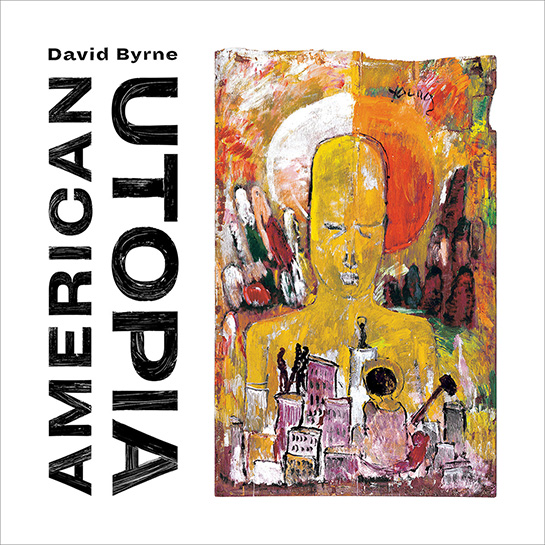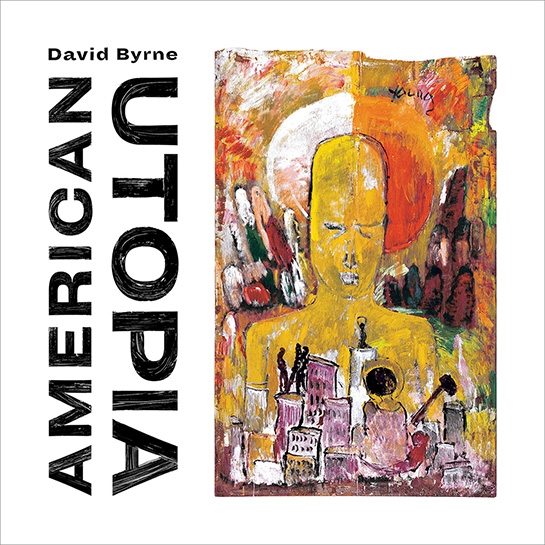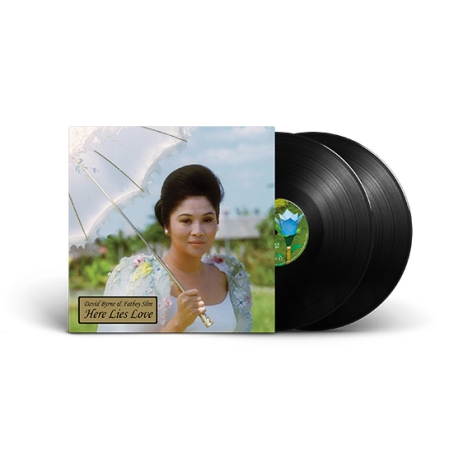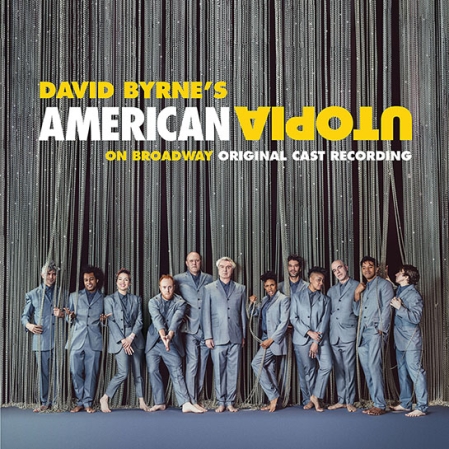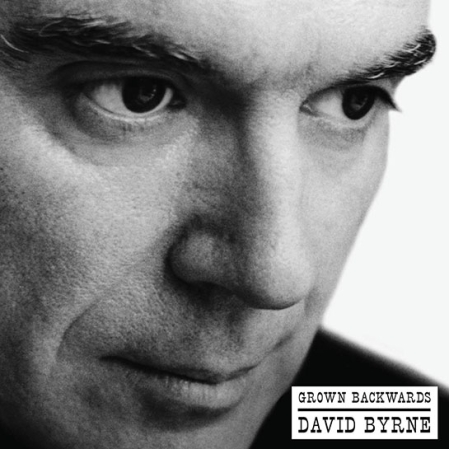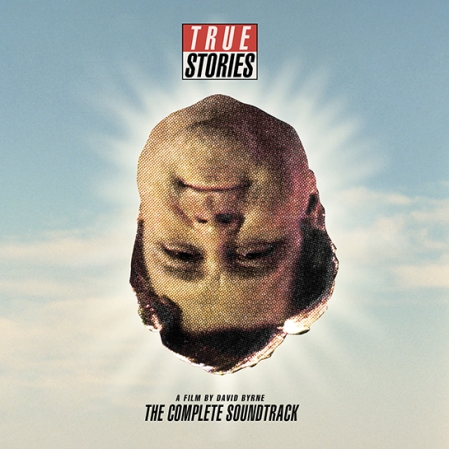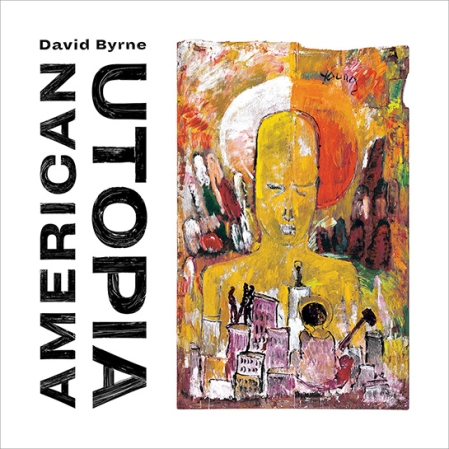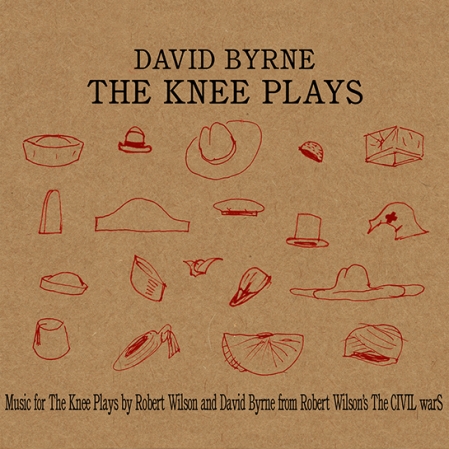David Byrne's album American Utopia fits hand-in-hand with the vision for his series "Reasons To Be Cheerful" (named for the Ian Dury song), for which he has been collecting stories, news, ideas, and other items that inspire optimism. "American Utopia is an album full of pulsating beats and rich textures," says Stereogum. "The new album isn't a throwback; it feels like it could only exist right now." Q says: "Byrne remains as playful and brilliant as ever." Grammy Award Nominee: Best Alternative Album.
Grammy Award Nominee: Best Alternative Album
David Byrne announced his forthcoming solo record, American Utopia, during a presentation of "Reasons To Be Cheerful," an ongoing series curated by Byrne of hopeful writings, photos, music, and lectures. The presentation was given at New York's New School to a live audience, as well as livestreamed via his Facebook page. American Utopia was released March 9, 2018, via Todomundo / Nonesuch Records, accompanied by a world tour that will bring a choreographed concert that Byrne has called "the most ambitious show I've done since the shows that were filmed for Stop Making Sense." The album track "Everybody's Coming To My House"—co-written with Brian Eno, featuring contributions from TTY, Happa, Onyx Collective leader Isaiah Barr, Mercury Prize winner Sampha, and others—also was released.
American Utopia fits hand-in-hand with Byrne's vision for his series "Reasons To Be Cheerful," named for the song by the late Ian Dury. Over the last year, Byrne has been collecting stories, news, ideas, and other items that all either embody or identify examples of things that inspire optimism, such as a tech breakthrough, a musical act, a new idea in urban planning or transportation—something seen, heard, or tasted. Just as the album questions the current state of society while offering solace through song, the content of the series recognizes the darkness and complexity of today while showcasing alternatives to the despair that threatens us. A “Reasons To Be Cheerful” hub, where Byrne shares these items, can be accessed here.
While David Byrne has collaborated on joint releases with Eno, Norman Cook (aka Fatboy Slim), and most recently St. Vincent over the past decade, American Utopia is Byrne's first solo album since 2004's Grown Backwards, also on Nonesuch. American Utopia morphed during the writing and recording process, beginning with longtime collaborator Eno, and eventually growing to include collaboration with producer Rodaidh McDonald (The xx, King Krule, Sampha, Savages) alongside a diverse cast of creative contributors including Daniel Lopatin (aka Oneohtrix Point Never), Jam City, Thomas Bartlett (St. Vincent producer, aka Doveman), Jack Peñate, and others. The album was recorded in New York City at DB Spare Bedroom, Reservoir Studios, Oscilloscope, XL Studios, and Crowdspacer Studio and in London at Livingston Studio 1.
Speaking about the album, Byrne said:
These songs don't describe this imaginary and possibly impossible place, but rather they attempt to describe the world we live in now—and that world, when we look at it, as we live in it, as it impacts on us—immediately commands us to ask ourselves- is there another way? A better way? A different way?
This group of songs is indirectly about those questions. And what drives us to ask those questions. The songs are sincere—the title is not ironic. The title is not so much about a utopia, as it is about our longing, frustration, aspirations, fears, hopes regarding what could be, what is possible. How and what could we be. Surely, we ask ourselves, it doesn't have to be like this. There is a longing for possibility— and I have a feeling that is what these songs touch on.
America—or to be correctthe United States—was founded as a Utopian Experiment. Though it never did succeed in all its aims enough were realized in the brief history to give hope to many. Now it seems we are seeing that hope, those possibilities, be withdrawn. The project seems on the verge of complete and utter failure. So, naturally, we all now ask ourselves—was it too much to ask? Are we wrong about how humans can be? Is there another way? Can we start over?
I am as mystified as any of us—I have no prescriptions or sure-fire answers—but I sense that I am not the only one asking, wondering and still willing to hold on to some tiny bit of hope, still willing to not succumb entirely to despair or cynicism. It's not easy, but music helps.
The album packaging features the work of "outsider artist" Purvis Young, whose work was often a blend of painting/drawing and collaged elements comprised of everyday found objects. A painting depicting a head with a face of indeterminate race or possibly gender—dreaming, meditating, contemplating—is on the album's cover.
David Byrne’s recent works include Joan of Arc: Into the Fire, a theatrical exploration of the historical heroine which premiered at The Public Theater in New York (2017); The Institute Presents: NEUROSOCIETY, a series of interactive environments created in conjunction with PACE Arts + Technology that question human perception and bias (2016); Contemporary Color, an event inspired by the American folk tradition of color guard and performed at Brooklyn’s Barclays Center and Toronto’s Air Canada Centre (2015); Here Lies Love, a twenty-two-song theatrical production about the life of Imelda Marcos, authored in collaboration with Fatboy Slim that premiered at The Public Theater in New York (2013), traveled to London’s National Theater for a sold-out run (2014–15), and was remounted at the Seattle Repertory Theater (2017); Love This Giant, a studio album and worldwide tour created with St. Vincent (2012); and How Music Works, a book about the history, experience, and social aspects of music (2012). In 2015 Byrne curated Southbank Centre’s annual Meltdown festival in London. Aco-founder of the group Talking Heads (1976–88), he has released nine studio albums and worked on multiple other projects, including collaborations with Brian Eno, Twyla Tharp, Robert Wilson, and Jonathan Demme, among others. He also founded the highly respected record label Luaka Bop. ecognition of Byrne’s various works include Obies, Drama Desk, Lortel, and Evening Standard awards for Here Lies Love, an Oscar, Grammy, and Golden Globe for the soundtrack to Bernardo Bertolucci’s The Last Emperor, and induction into the Rock and Roll Hall of Fame with Talking Heads. Byrne has published and exhibited visual art since his college days, including photography, filmmaking and writing. He lives in New York City.
PRODUCTION CREDITS
Produced by David Byrne, Rodaidh McDonald and Patrick Dillett
Based on original tracks by Brian Eno
Mixed and additional programming by David Wrench for Solar Management Ltd.
Mix Engineers: Marta Salogni, Jack Sugden and Tuck Nelson
Mastered by Greg Calbi at Sterling Sound
Engineered by Alex Epton, Matt Cohn, and Patrick Dillett
Additional Engineering on "This Is That" by Gabriel Schuman
Recorded at:
DB Spare Bedroom, NYC
Reservoir Studios, NYC
Oscilloscope Studios, NYC
XL Studio, NYC
Livingston Studio 1, London
Crowdspacer Studio, NYC
All songs written by David Byrne and Brian Eno, except:
Tracks 5 and 10 written by David Byrne and Daniel Lopatin
Tracks 5 and 10 produced by Daniel Lopatin
Additional Production by Rodaidh McDonald
Artwork by Purvis Young
© 2017 Estate of Purvis Young / Artists Rights Society (ARS), New York
565710
MUSICIANS
David Byrne, vocals (1–10), guitars (1–3, 6–10), keys (1, 2, 7, 9), pads (9)
Brian Eno, drum programming (1), vocoder (1), background vocals (1), prog ride tracks (1), keys (6, 8), percussion (6, 9), vocal effects (6), celeste (6), whistling (6), brass (6), drums (8), robot rhythm guitar (9)
Thomas Bartlett, piano (1), Mellotron (1, 2, 7, 9)
Rodaidh McDonald, additional keys (1–3, 6, 8, 9), verse percussion (1), arrangement (2–5, 10), drum programming (2–9), bells (6), strings (7), percussion programming (8)
Joey Waronker , tom (1), snare (1)
Jack Peñate, backing vocals (2, 7), keys (2, 3, 7), textures (2), bass (3), shaker (3)
Happa, drum programming (2, 9), electronics (3), drums (3), synth solo (9)
Jamie Edwards, sitar samples (2)
Nathan Jenkins, harmonica solo (2), voices (2)
Jaakko Savolainen, guitar (2), bass (2), synth (2), keys (3)
Isaiah Barr, sax (2, 9)
Alex Epton, choir programming (2), drum programming (2, 6, 8), synth stabs (3), bass (7), cymbals (8), shaker (9)
Magnus Bang Olsen, piano (3)
Ben Anderson, cymbal (3)
Jam City, synth stabs (3), guitar (3), drums (3)
Ben Reed, live bass (3, 9)
Koreless, drums (3)
Daniel Lopatin, keys (4, 5, 8, 10), drums (4, 5, 10), synths (4), bass (4), strings (8), processing and textures (8, 9)
Joe Williams, harp (4)
Ariel Rechtshaid, flexatone (6)
Mauro Refosco, wood percussion (6), talking drums (7), bongos (7), percussion (8, 9)
Airhead, drums (7)
MMPH, main orchestral arrangement (8), sounds (8)
Brian Wolfe, drums (8)
Ethan P Flynn, middle 8 section synths (9)
Sampha, piano (9)
